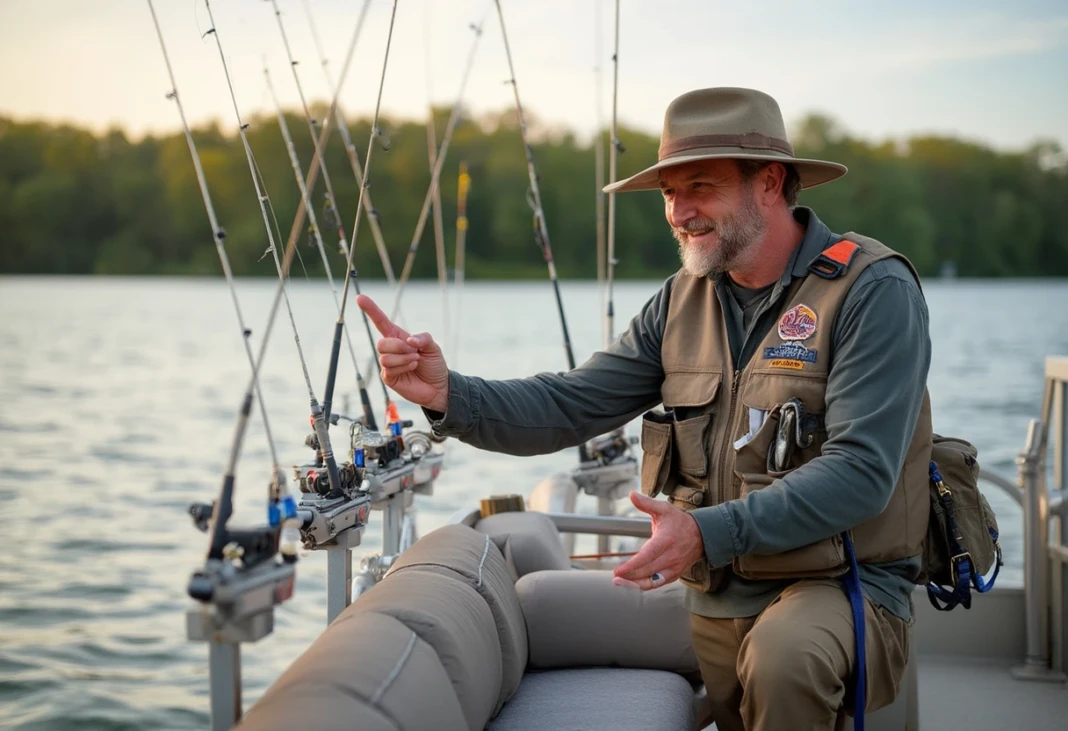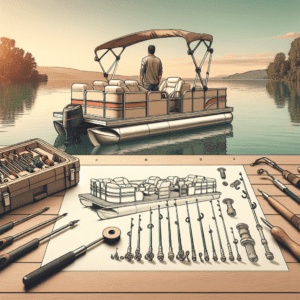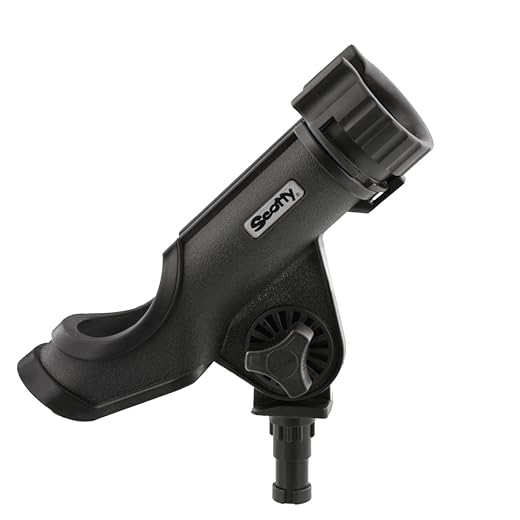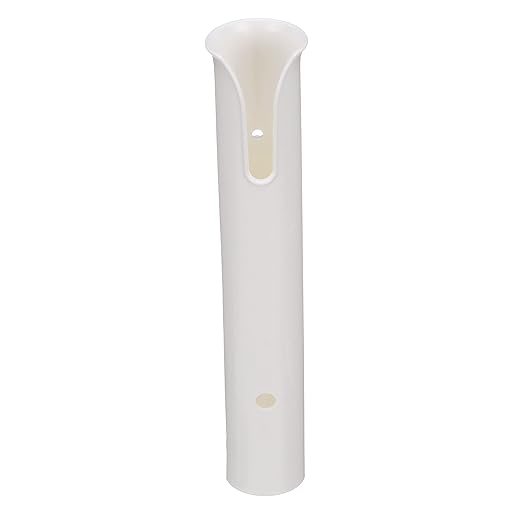Pontoon Boat Rod Holders
A. Importance of Rod Holders for Pontoon Boats
Fishing on a pontoon boat is a popular leisure activity for many anglers. However, it can be challenging to manage fishing rods without the right equipment. This is where pontoon boat rod holders come in handy. They offer an efficient and safe way of storing fishing rods when not in use, preventing them from sliding around the boat or falling overboard. Using rod holders also allows you to multitask, such as using a second rod or enjoying a snack while waiting for a catch.
B. Different Types of Pontoon Boat Rod Holders
There are various pontoon boat rod holders available in the market, each with unique features and benefits. Some popular types include clamp-on rod holders, in-gunwale rod holders, and flush mount rod holders. Clamp-on rod holders are easy to install and can be moved around as needed. In-gunwale rod holders are attached to the side of the boat and can be easily accessed from the seating area. Flush mount rod holders, on the other hand, are installed permanently and are more aesthetically pleasing.
C. Factors to Consider When Choosing Rod Holders
When selecting pontoon boat rod holders, several factors must be considered. These include the number of fishing rods to be used, the intended fishing technique, the type of boat, and material quality. Other factors include durability, ease of installation, and overall user convenience. Overall, selecting high-quality rod holders that meet your specific needs can significantly enhance your fishing experience on your pontoon boat.
Tips for Installing Pontoon Boat Rod Holders
Rod holders are an essential accessory for any pontoon boat owner, providing the means to anchor your fishing rod securely while you wait for a catch. While many pontoon boats come with fixed rod holders, installing additional ones can be a great way to customize your boat and maximize your fishing experience. Here are some tips to keep in mind:
Selecting the Right Location for Installation
The location of your rod holders is critical to your fishing experience. You want them to be easily accessible but not get in the way of your boating activities. Ideally, you should install them in an area that allows you to fish comfortably while seated, and adjust them to different angles for optimal line casting.
Tools and Materials Needed for Installation
Before you start installing your rod holders, you’ll need to gather the necessary tools and materials. These may include drill bits, screwdrivers, pliers, marine sealant, and mounting brackets specific to your chosen rod holder model. Check the manufacturer’s instructions to ensure you have everything you need.
Step-by-Step Installation Guide
- Determine the Location: Choose a spot on your boat where the holder will be both effective and out of the way.
- Gather Tools: Typically, you will need a drill, screws, a screwdriver, and potentially a wrench.
- Mark the Holes: Use the rod holder base as a template to mark where you will drill.
- Drill the Holes: Carefully drill holes at the marked spots.
- Attach the Holder: Secure the holder with screws, ensuring it is tightly fastened.
Safety Measures and Best Practices
When installing rod holders, safety should be your top priority. Always wear protective gear, such as gloves and safety goggles, and double-check your work before stepping out on the water. Use marine-grade sealant to protect the installation site from water damage and corrosion, and follow the manufacturer’s load capacity recommendations to avoid accidents.
By following these tips, you can easily install rod holders on your pontoon boat and enjoy a more comfortable and efficient fishing experience. Don’t be afraid to experiment with different models and locations until you find the perfect fit!
Maximizing Your Fishing Experience with the Right Rod Holders
Fishing on a pontoon boat can be an exhilarating experience. However, to guarantee a great time, it is crucial to invest in the right type of rod holders. Pontoon boats come in different sizes and shapes, and the position and number of rod holders may vary from one boat to another. Here are some factors to consider when selecting holder rod types for pontoon boats:
- The Fishing Technique: Different fishing techniques require different types of rod holders. For instance, vertical fishing requires pole holders that are mounted straight up and down. Angled fishing, on the other hand, requires holders that are mounted at a 30-degree angle.
- Rod Compatibility: Before purchasing rod holders, it is imperative to know the type of rod to be used. Different holders can accommodate different rod sizes and weights. Choose a rod holder that is compatible with your specific rod.
- Innovation and Technology: Rod holders have evolved over time, and modern holders come with unique features. Consider holders that have additional features such as adjustable angles and locking mechanisms
Once you have chosen the right type of holders, the next step is to install them in the right positions. Here are some tips for installation:
- Selecting the Right Location for Installation: Rod holders should be installed in locations that allow for easy access during fishing. The holders should also be placed at a comfortable height and angle for the angler.
- Tools and Materials Needed for Installation: The tools needed for installation may vary depending on the type of holder and the material of the boat. In most cases, you will need a drill, screws, and bolts. Consult the instruction manual provided by the manufacturer for the specific tools required.
- Step-by-Step Installation Guide: Follow the installation instructions provided by the manufacturer carefully. The installation guide should give you step-by-step instructions on how to install the holder correctly.
- Safety Measures and Best Practices: Ensure that all screws and bolts are tightly secured to avoid accidents. Follow all safety measures recommended by the manufacturer.
Finally, accessibility and convenience considerations should be made when installing rod holders. Ensure that rod holders are positioned in a way that gives you space to move around the boat freely. Also, make sure you can easily reach the holders when you need to access the rod. As you become accustomed to your rod holders, you may need to adjust them to optimal fishing positions for the perfect fishing experience.
Reviewing the Top Pontoon Boat Rod Holders on the Market
A. Criteria for Evaluating Rod Holders
Choosing the right pontoon boat rod holder is important to not only improve your fishing experience but also to ensure that your fishing rod stays secure. Here are some factors to consider when evaluating different models:
- Material: Consider the durability and strength of the material used to make the holder such as aluminum, stainless steel or plastic.
- Capacity: Look for a holder that matches the size, weight, and length of your fishing rod to ensure the best fit.
- Versatility: Consider if the holder can accommodate different types of fishing rods, including spinning, casting or trolling ones.
- Adjustability: Look for holders that can be adjusted to different angles and heights to optimize your fishing experience.
- Stability: Check if the holder is stable in both calm and rough waters, so your fishing rod doesn’t move too much.
B. In-Depth Reviews of Popular Models and Brands
In this section, we will go over some of the best pontoon boat rod holders available in the market, based on their popularity, features, and user reviews.
| Model/Brand | Key Features | Price Range | User Rating |
|---|---|---|---|
| Brocraft Rail Mount Rod Holder | Adjustable, stainless steel construction, easy installation | $50-$60 | 4.6/5 |
| Scotty Power Lock Rod Holder | Universal design, patented locking mechanism, versatile | $20-$30 | 4.7/5 |
| Attwood 12751-2 Rod Holder | Removable, durable construction, protects fishing rod | $15-$20 | 4.4/5 |
| C-MAP Flush Mount Rod Holder | Flush-mount, high-impact construction, adjustable angle | $40-$50 | 4.7/5 |
| Bert’s Custom Tackle Rail Mount Rod Holder | Heavy-duty construction, adjustable height, locks in place | $70-$80 | 4.8/5 |
These are just a few of the rod holders available in the market. Each has its unique features and advantages. The choice largely comes down to personal preference and budget.
C. Pros and Cons of Each Rod Holder
Here’s a quick overview of the pros and cons of each model we just reviewed:
- Brocraft Rail Mount Rod Holder: Pros – durable stainless steel material, easy to install, adjustable design. Cons – higher price point, may not fit all rod sizes.
- Scotty Power Lock Rod Holder: Pros – versatile, patented locking system, affordable. Cons – may not fit all styles of boats, less sturdy than other options.
- Attwood 12708-2 Rod Holder: Pros – affordable, protective sleeves for rods, easy to install. Cons – less durable than other options, may not fit larger rods well.
- C-MAP Flush Mount Rod Holder: Pros – flush mount design, adjustable angle, high-impact construction. Cons – may not fit all boat styles, may not work with thicker fishing rods.
- Berts Custom Tackle Rail Mount Rod Holder: Pros – adjustable height and position, sturdy construction, locks in place. Cons – more expensive than other options, requires some installation effort.
D. Recommendations for Different Fishing Styles and Budgets
Ultimately, the right rod holder for you will depend on your budget and fishing needs. Here are some recommendations based on different styles and budgets:
- Beginner: Starting out, it’s best to look for an affordable option that is easy to install and durable. The Attwood 12751-2 Rod Holder or the Scotty Power Lock Rod Holder are both excellent choices for beginners.
- Intermediate: If you’re looking to upgrade your fishing game, consider a larger investment in a rod holder like the Brocraft Rail Mount Rod Holder or the C-MAP Flush Mount Rod Holder. Both offer sturdy construction and adjustable features, but at a higher price point.
- Advanced: For experienced anglers, investing in a high-end rod holder such as the Bert’s Custom Tackle Rail Mount Rod Holder is likely the best choice. These types of holders offer the most versatility and durability for regular use.
| Model/Brand | Key Features | User Rating | |
|---|---|---|---|
| Brocraft Rail Mount Rod Holder | Adjustable, stainless steel construction, easy installation | 4.6/5 | |
| Scotty Power Lock Rod Holder | Universal design, patented locking mechanism, versatile | 4.7/5 | |
| Attwood 12708-2 Rod Holder | Removable, durable construction, protects fishing rod | 4.4/5 | |
| C-MAP Flush Mount Rod Holder | Flush-mount, high-impact construction, adjustable angle | 4.7/5 | |
| Bert’s Custom Tackle Rail Mount Rod Holder | Heavy-duty construction, adjustable height, locks in place | 4.8/5 |
Maintenance and Care for Your Pontoon Boat Rod Holders
Pontoon boat rod holders play an essential role in securing your fishing gear, but they also require attention to avoid issues and maintain efficiency. To get the most out of your rod holders, consider the following maintenance and care tips:
A. Routine Cleaning and Upkeep
Build-up of dirt, salt, and debris can create blockages in your rod holders, making them difficult to use. Routine cleaning and upkeep can help you avoid this problem and extend the lifespan of your rod holders. You should be cleaning your rod holders after every use and also when they start to show signs of dirt. Use a dental pick or a small brush to clean out any dirt or debris that may be clogging the rod holder tubes.
Don’t forget to check that all moving parts, such as hinges and release mechanisms, are well-lubricated and functioning smoothly. Apply a small amount of oil or silicone lubricant to moving parts and wipe off any excess with a clean cloth or paper towel.
B. Seasonal Maintenance Tips
Seasonal maintenance can help you prevent serious problems before they arise. For example, salt water can be corrosive to many materials commonly used in rod holders, causing unsightly rust and degradation over time. If you use your boat in salt water, consider spraying your rod holders with a silicone lubricant or specialized corrosion inhibitor to prevent rust buildup.
Also, consider replacing any cracked or damaged rod holders and hardware before the start of fishing season to avoid issues that could ruin your day on the water.
C. Troubleshooting Common Issues with Rod Holders
If you’re experiencing issues with your rod holders, such as difficulty retracting or inserting your rod, there may be a simple solution. Check that there isn’t any dirt or debris blocking the rod holder’s tube, and ensure that all moving parts are well-lubricated.
If you can’t find a simple solution, consult your rod holder’s manufacturer for support. They may be able to diagnose the issue and recommend a fix.
D. When to Replace Your Rod Holders
No matter how well-maintained your rod holders are, they will eventually need to be replaced. Signs that your rod holders may need replacement include cracks, excessive rust or corrosion, or other forms of damage.
Pay attention to how well your rod holders are working, and if you notice any issues that can’t be easily fixed or are impacting your fishing experience, it may be time to consider replacement.
Frequently Asked Questions
- Q: Can I use rod holders for different types of fishing rods?
A: Yes, many rod holders are highly adjustable, making them suitable for use with a variety of rod types and sizes. However, be sure to check the manufacturer’s specifications for weight capacity and other limitations that may apply.
- Q: Are there any unique considerations for cleaning rod holders used in saltwater?
A: Yes, saltwater can be especially corrosive and can cause rust and other damage to common rod holder materials. Be sure to clean and lubricate your rod holders after every use in saltwater and consider using specialized corrosion inhibitors and other protective measures.
- Q: What should I do if my rod holder is cracking or otherwise showing signs of damage?
A: If you notice any cracks or other signs of damage in your rod holder, it’s best to replace it as soon as possible. Continuing to use a damaged rod holder can not only decrease its effectiveness but may also compromise the safety of your fishing gear.












